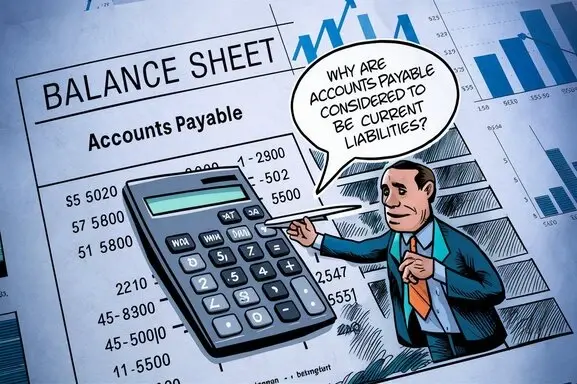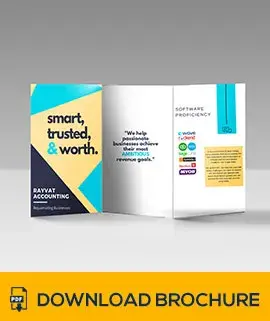Why Are Accounts Payable Considered To Be Current Liabilities?

Accounts Payable is one of the most common current liabilities that are reported by businesses and organizations, but little do people understand why it is categorized as such.
Short-term liabilities or current liabilities—that is, the money a company owes its credit-based suppliers for the goods or services acquired—accounts due are classified as such. AP is implemented so that, on the balance sheet, AP is shown as the current obligation as most of the owing amounts are paid within a year. Clarifying why AP are current liabilities might help one understand why they are important in corporate financial management and reporting.
What are Current Liabilities?
The current liabilities refer to the credit amounts that a business entity is likely to pay within the next one year or within the operating cycle whichever is earlier. Along with AP, common current liabilities include:
- Short-term debt
- Accrued expenses
- Customer advances/deposits
- Payroll liabilities
- Income taxes payable
- Amount of current liabilities that are due in more than one year, or more commonly known as the long-term debt.
Clustering these short-term debts and obligations in the current liabilities section gives information on a sum of money that is due for payment shortly. This is useful to the investors, creditors, and management to get an insight into the company’s short-term liquidity position.
On long-term liabilities, it refers to obligations that are payable after more than a year. Some examples of other non-current liabilities include; bonds payable, mortgages, leases, and pensions. The relative separation of current and fixed assets also plays a role in indicating how well a firm satisfies immediate cash obligations.
The reason for considering accounts payable as short-term is that these liabilities are expected to be paid within a short time of one year.
Accounts payable are mostly given in 30, 60, or 90 days note that payment of these accounts is made after purchase. This quick turnover perfectly matches the concept of the current liabilities as any debt that is owed and due within one year. Some reasons why accounts payable are always considered a current liability include:
- Payables are created new always since the companies buy from vendors often and repeatedly. This means that there is a constant emergence of new APs where the old ones are retired once they are paid.
- Terms mean payment must be made not later than several months after receipt of goods or the rendering of services. It will be beneficial to pay the invoices on time so that companies can maintain a healthy relationship with the vendors.
- It requires operating cash to the vendors and they have to get reasonable payment cycles. Long-term ones would harm the cash conversion cycle in their overall performance.
- When the payments were made over one year, they might reflect the issues that vendors would not allow, such as late payments.
In other words, accounts payable continue to be paid on time because organizations are obliged to repay these liabilities in the short term to sustain good working relations with vendors that support current operations. Thus, AP stays current always as purchases pass through the reporting period of the accounting cycle.
Impacts on Financial Statements
Reporting accounts payable as current liabilities affects several key financial figures and ratios readily employed by internal and external users.
Working Capital
Instead, working capital is calculated as current assets less current liabilities. Working capital is further reduced when short-term debt like the AP and other outstanding debts are considered. This represents the company’s solvency, after meeting current needs that are due for payment. Because AP is a deduction of working capital, it means that cash is due to be paid to suppliers, and thus the company has less immediate access to funds for other uses.
Current Ratio
The current ratio establishes how effectively a company can be able to settle current liabilities using current assets. Conversely, accounts payable directly decrease this ratio. The higher the AP balance, the lower the value of the current ratio will be, and hence these two ratios have an inverse relationship with each other. A decreasing current ratio in the past may also indicate that an organization is facing liquidity problems if current debts are growing at a faster pace than the current assets.
Cash Conversion Cycle
The cash conversion cycle reveals how long cash is trapped in inventory and/or accounts before it is collected from customers again in the form of cash. Accounts payable is rather the factor that immediately decreases the cash conversion cycle, as it indicates the source of financing that does not involve the immediate outflow of cash. This indicates that AP aids in funding operations between outflows to suppliers and definite inflows from the customers.
In other words, recording accounts payable as current liabilities is useful in providing essential information on the liability side of a balance sheet in terms of liquidity risk, anticipated cash needs, and operating cycle financing. These decisions include financing, working capital requirements, and cash flow budgets and hence managers can use AP reporting in this aspect.
Accounting for Accounts Payable: Its Treatment as Current Liability
It is correct to classify accounts payable as current liabilities since it shows that the company will be settling the amounts due to vendors within one year. This classification assists the stakeholders who are interested in the perspective of cash flow requirements shortly. It also uses accounts payable balances as one of the components of liquidity and operating cycle ratios in financial analysis. Thus, the recording of accounts payable in the current liabilities also serves as a reference point for short-term debts and data used in decision-making for long-term strategic plans.
Contact us here for Accounting services now!

